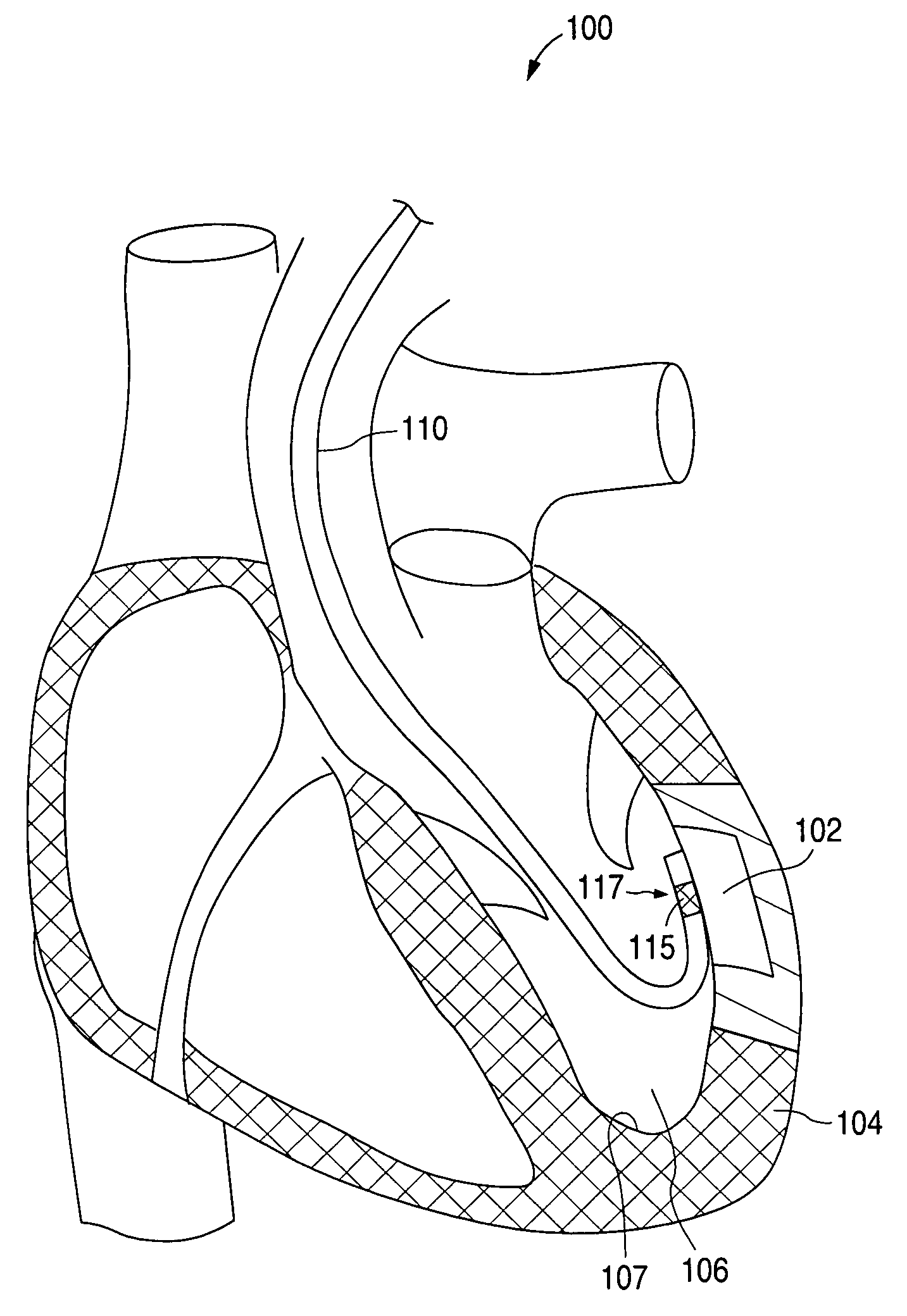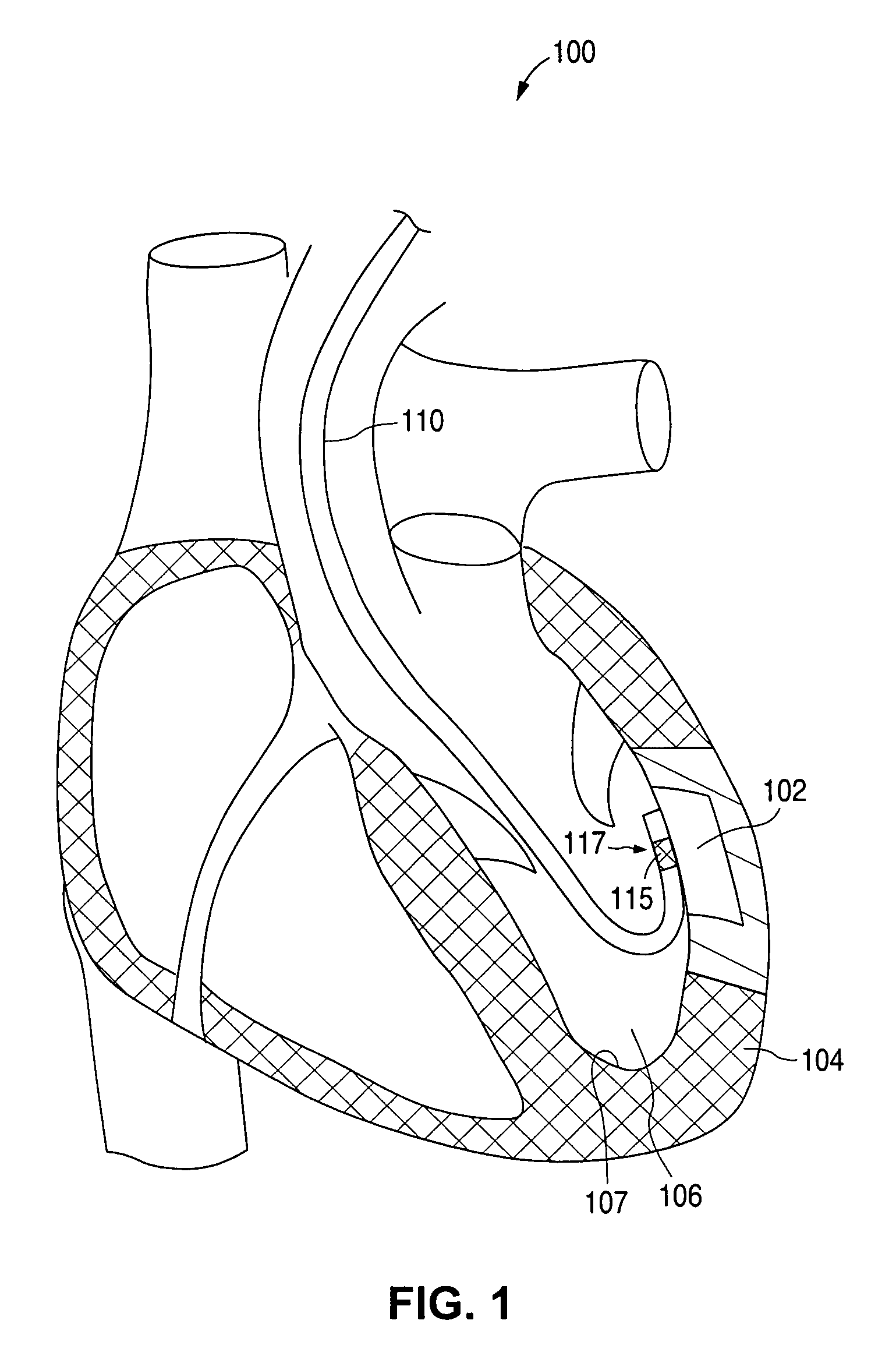Method for treating ischemia
a technology of ischemia and ultrasonic waves, applied in the field of heart disease, can solve the problems of affecting the quality of life of millions of people, excessive trauma and damage to the heart tissue, and the risk of complications such as hemorrhaging and scarring, and achieve the effect of reducing the risk to the patient and the injury to the heart tissu
- Summary
- Abstract
- Description
- Claims
- Application Information
AI Technical Summary
Benefits of technology
Problems solved by technology
Method used
Image
Examples
Embodiment Construction
[0035]FIG. 1 illustrates a heart 100 having an ischemic region 102 in the myocardium 104 of the left ventricle 106. A catheter 110 has been inserted into the left ventricle 106. An ultrasound transducer 115 is mounted on distal portion 117 of catheter 110. Ultrasound transducer 115 is positioned adjacent to the endocardial surface 107 and proximate to ischemic region 102, where it is used to treat ischemic region 102, as described below. In particular, transducer 115 is positioned on the endocardial surface 107 laterally adjacent ischemic region 102.
[0036]Although FIG. 1 illustrates ischemic region 102 and catheter 110 in the left ventricle 106, which is particularly susceptible to ischemia, the beneficial effect of the procedures and devices described herein can be used to treat any ischemic area of the heart or other body tissue.
[0037]FIG. 2A illustrates a portion of myocardium 104 with an ischemic region 102. Ultrasound transducer 115 on catheter 110 is oriented toward ischemic r...
PUM
 Login to View More
Login to View More Abstract
Description
Claims
Application Information
 Login to View More
Login to View More - R&D
- Intellectual Property
- Life Sciences
- Materials
- Tech Scout
- Unparalleled Data Quality
- Higher Quality Content
- 60% Fewer Hallucinations
Browse by: Latest US Patents, China's latest patents, Technical Efficacy Thesaurus, Application Domain, Technology Topic, Popular Technical Reports.
© 2025 PatSnap. All rights reserved.Legal|Privacy policy|Modern Slavery Act Transparency Statement|Sitemap|About US| Contact US: help@patsnap.com



